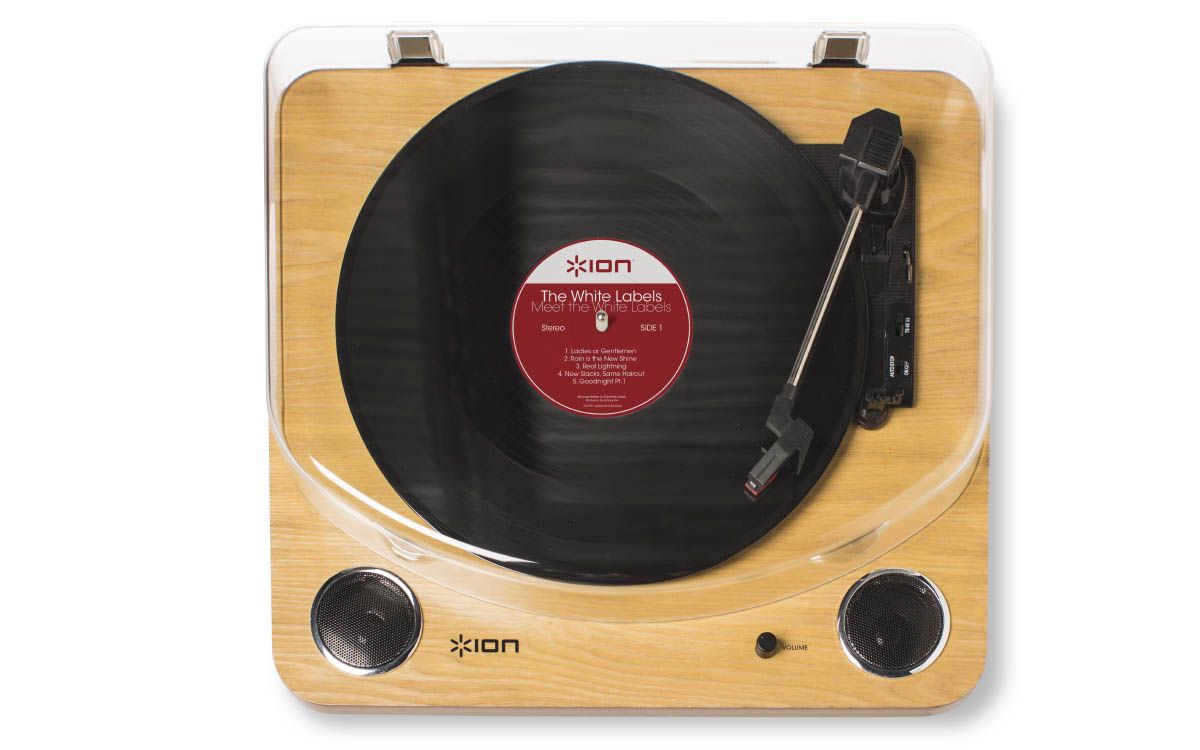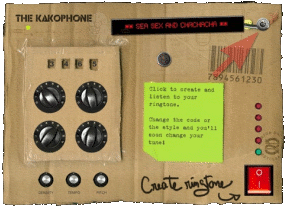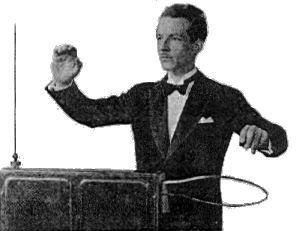![]()
Una eccellente spiegazione della fisica degli strumenti ad arco si può leggere qui.
Category Archives: Audio
MIDI Controllers
Controller Zone è una interessante pagina che raccoglie link ai produttori di una serie di superfici di controllo MIDI, cioè quegli oggetti che permettono di inviare dati MIDI tramite faders, potenziometri e bottoni, oppure con sistemi un po’ meno usuali come un theremin MIDI o un sistema che genera dati a partire dalle onde cerebrali.
Sonic Visualizer
Un ottimo software per l’analisi del suono e per di più open source e gratuito sviluppato presso il Centre for Digital Music at Queen Mary, University of London.
Prodotto per Linux e Windoze (io ho provato solo il primo, ma suppongo siano uguali), dispone, fra l’altro, di FFT, spettrogramma 2D, stima del pitch e possibilità di inserire annotazioni in overlay. Su Linux è in grado di utilizzare tutti i LADSPA plugins per l’elaborazione audio. Ottimo per il ricercatore e per il musicista elettronico. Cliccate sull’immagine per ingrandirla.
Ecco il sito da cui scaricarlo e la pagina delle features.
The aim of Sonic Visualiser is to be the first program you reach for when want to study a musical recording rather than simply listen to it.
As well as a number of features designed to make exploring audio data as revealing and fun as possible, Sonic Visualiser also has powerful annotation capabilities to help you to describe what you find, and the ability to run automated annotation and analysis plugins in the Vamp analysis plugin format – as well as applying standard audio effects.
We hope Sonic Visualiser will be of particular interest to musicologists, archivists, signal-processing researchers and anyone else looking for a friendly way to take a look at what lies inside the audio file.
Sonic Visualiser is Free Software, distributed under the GNU General Public License and available for Linux, OS/X, and Windows. It was developed at the Centre for Digital Music at Queen Mary, University of London, by Chris Cannam (of Fervent Software, Rosegarden, Studio to Go!, and DSSI).
Here is the site and the features page.
The FreeSound Project
The Freesound Project (by the Universitat Pompeu Fabra, Barcelona) aims to create a huge collaborative database of audio snippets, samples, recordings, bleeps, … released under the Creative Commons Sampling Plus License. The Freesound Project provides new and interesting ways of accessing these samples, allowing users to
- browse the sounds in new ways using keywords, a “sounds-like” type of browsing and more
- up and download sounds to and from the database, under the same creative commons license
- interact with fellow sound-artists!
They also aim to create an open database of sounds that can also be used for scientific research. Many audio research institutions have trouble finding correctly licensed audio to test their algorithms. Many have voiced this problem, but so far there hasn’t been a solution.
iTTUSB

ION has created a revolutionary USB turntable allowing you to convert your old vinyl collection directly to CD or MP3 with included recording software. The iTTUSB also features a switchable phono/line level output for connecting to any home stereo with an AUX input.
Questo interessante ordigno si chiama iTTUSB (ormai la i minuscola è obbligatoria). È un piatto da vinile che, oltre ad uscire in phono, include (evidentemente) un convertitore AD che converte l’audio in digitale e lo invia alla porta USB del computer, da cui può essere facilmente salvato in wav con un qualsiasi programma di HD recording.
Ho messo (evidentemente) perché i signori della Ion Audio non si sono degnati di specificare in modo visibile le caratteristiche tecniche dell’ADC né tantomeno il fatto che esiste (il che mi sembra piuttosto iDiota). Verosimilmente si tratta di un 16 bit (tanto la dinamica dei vinili è poca).
Venti di Titano
Questa non è una composizione musicale e forse è noiosa, ma ascoltatela.
È il suono registrato dal microfono posto a bordo della sonda Huygens, parte del progetto Cassini di esplorazione dei pianeti esterni, durante la sua discesa di un anno fa su Titano, satellite di Saturno e unica luna del sistema solare con un’atmosfera.
Per quelli che sanno sognare…
Do not go gentle into that good night
 L’esperienza che vi propongo qui è sempre audio, ma è un po’ diversa dal solito.
L’esperienza che vi propongo qui è sempre audio, ma è un po’ diversa dal solito.
Noi non abbiamo la consuetudine della lettura di poesia. Gli anglosassoni, invece, ce l’hanno ed è una gran cosa, soprattutto quando a leggere sono gli stessi autori.
Recentemente, Salon.com ha messo in linea tutta la Caedmon Collection, una serie di registrazioni eseguite fra il 1952 e il ’53, in cui Dylan Thomas legge una vasta selezione della propria poesia e prosa, insiema a qualche brano dei suoi autori preferiti, fra cui Shakespeare, Milton, Eliot, Auden, Hardy, Lawrence, Graves e il suo amico Vernon Watkins.
Da questa raccolta, ecco la famosissima “Do not go gentle into that good night”, dedicata al padre morente, letta da lui stesso.
L’impostazione vocale di Dylan Thomas è chiara e diretta, di grande potenza, ma con molte sfumature espressive. D’altronde, i suoi reading erano affollatissimi e la gente rimaneva fuori dai teatri o dai cinema in cui il poeta si esibiva, per mancanza di posto.
| Do not go gentle into that good night, Old age should burn and rave at close of day; Rage, rage against the dying of the light.Though wise men at their end know dark is right, Because their words had forked no lightning they Do not go gentle into that good night.Good men, the last wave by, crying how bright Their frail deeds might have danced in a green bay, Rage, rage against the dying of the light.Wild men who caught and sang the sun in flight, And learn, too late, they grieved it on its way, Do not go gentle into that good night. Grave men, near death, who see with blinding sight And you, my father, there on the sad height, |
Non andartene docile in quella buona notte, vecchiaia dovrebbe ardere e infierire quando cade il giorno; infuria, infuria contro il morire della luce.Benchè i saggi infine conoscano che il buio è giusto, poichè dalle parole loro non diramò alcun conforto, non se ne vanno docili in quella buona notte.I buoni che in preda all’ultima onda splendide proclamarono le loro fioche imprese, avrebbero potuto danzare in una verde baia, e infuriano, infuriano contro il morire della luce.I selvaggi, che il sole a volo presero e cantarono, tardi apprendono come lo afflissero nella sua via, non se ne vanno docili in quella buona notte. Gli austeri, vicini a morte, con cieca vista scorgono E tu, padre mio, là sulla triste altura io prego, |
Universe is not user friendly, but it seems

Ladies & Gentlemen I introduce to you the Kakophone.
This funny virtual synthesizer can generate an infinite number of customized ringtones in different styles. Then it sends the files to your mail address. All for free. You must only agree to receive a newsletter (advertisements, I suppose), that you can easily unsubscribe.
The device is really funny. It makes a lot of pretty noises. I suppose that many kids has been connected and used the program without thinking so much. Try it. But first read below.
Well, when you first enter the kakophone, it ask you for your telephone number that is printed on the device as bar-code (look under the red row: 789… it’s not mine). The number is used as random number seed to be sure that each ringtone is unique. From a mathematical point of view, this is correct.
Then you play with the device generating some ringtones and finally choose one.
Now the kakophone must create a file fitting your cellular phone. So it ask you for your country, the brand and model of your phone and your mail address.
And here I stop because I realized that if I press the button, the site could link
- my country
- my email
- my phone number
- the brand and model of my phone
Ok, it can’t be sure that the phone number is mine and I am just a little paranoid, but…
Pianoteq
Sempre la Piano Society (vedi post seguente) distribuisce anche Pianoteq, un software di simulazione del pianoforte basato su modelli fisici, particolarmente potente, versatile. Costa € 249, in linea con “Steinberg The Grand”, ma può essere scaricato e provato per 45 giorni. Questa è una pagina piena di demo.
Vi consiglio di provarlo. I modelli fisici danno ottimi risultati, senza quei salti di sonorità tipici del campionamento. Ecco le caratteristiche tecniche tratte da questa pagina.
- The piano sound is constructed in real time, responding to how the pianist strikes the keys and interacts with the pedals.
- It includes the entire complexity of a real piano (hammers, strings, duplex scale, pedals, cabinet).
- No quantization noise (32-bit internal sampling at 192 KHz).
- Real progressive variation of the timbre (127 velocities per note).
- Adjustable hammer hardness (voicing) and other similar parameters.
- Adjustable unison width (tuning) and other similar parameters.
- Adjustable piano size (soundboard) and other similar parameters.
- Adjustable spectrum profile, based on the first 8 overtones.
- Progressive sustain pedal, allowing partial-pedal effects.
- Sostenuto pedal, harmonic pedal and Una Corda (soft) pedal.
- Very fast to install and initialize.
- Total size is just 8 MB (MegaBytes).
- It can be used successfully with a laptop (low hardware requirements).
- Adjustable optional samples of acoustic noises (pedal and key release).
- Built-in graphic equalizer with freely adjustable key points.
- Built-in graphic velocity curve with keyboard presets.
- Built-in reverb unit with presets.
Fra i demo, vi faccio ascoltare questi (ma, valutandoli, pensate anche a che casse avete):
- Nocturne No. 3 Liebestraum (F. Liszt)
- La Fille aux Cheveux de Lin (C. Debussy)
- Improvvisazione demo
Cronologia della Musica Elettroacustica
Un po’ di autopromozione non guasta.
Vi segnalo la mia Cronologia della Musica Elettroacustica, una pagina piena di stravaganti curiosità come la voce di Edison registrata da uno dei suoi fonografi alla fine dell’800, oppure un incredibile carillon orchestrale con ance, flauti, campane, piatti, tamburi costruito in Svizzera da Gueissaz nel 1904 e inviato a San Pietroburgo per essere donato dallo Zar allo Scià di Persia, e naturalmente il suono dei primi strumenti elettrici e altro ancora.

